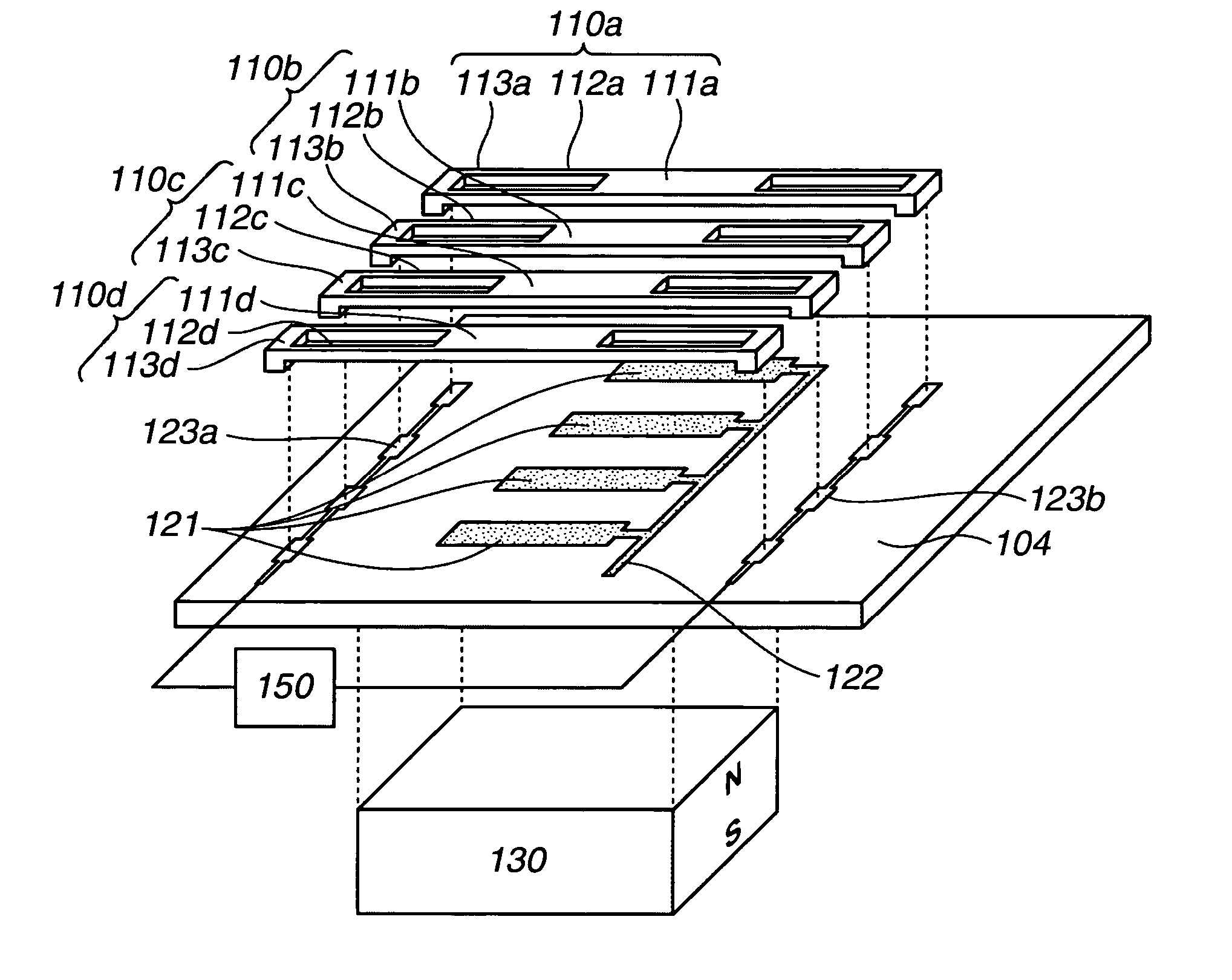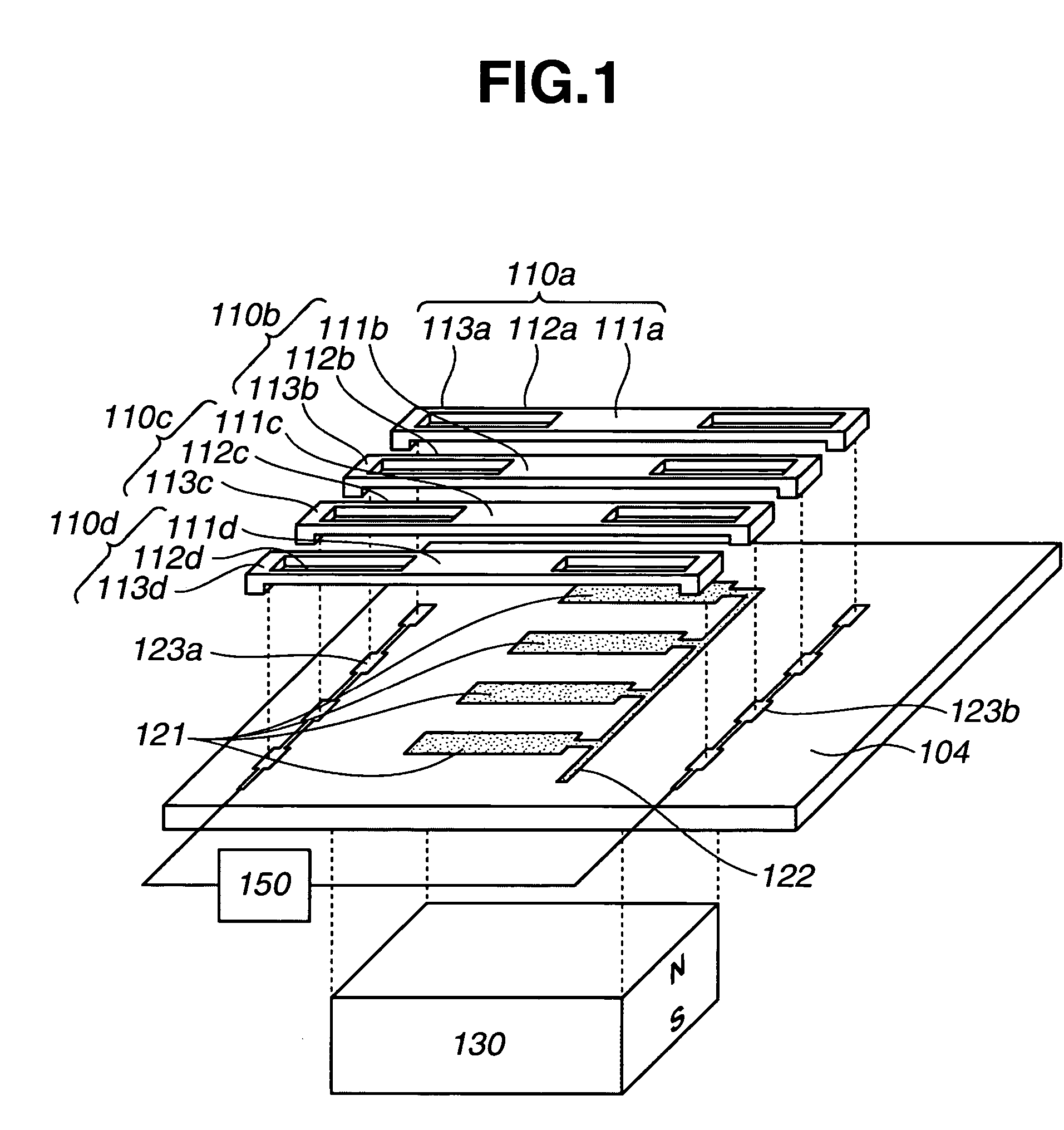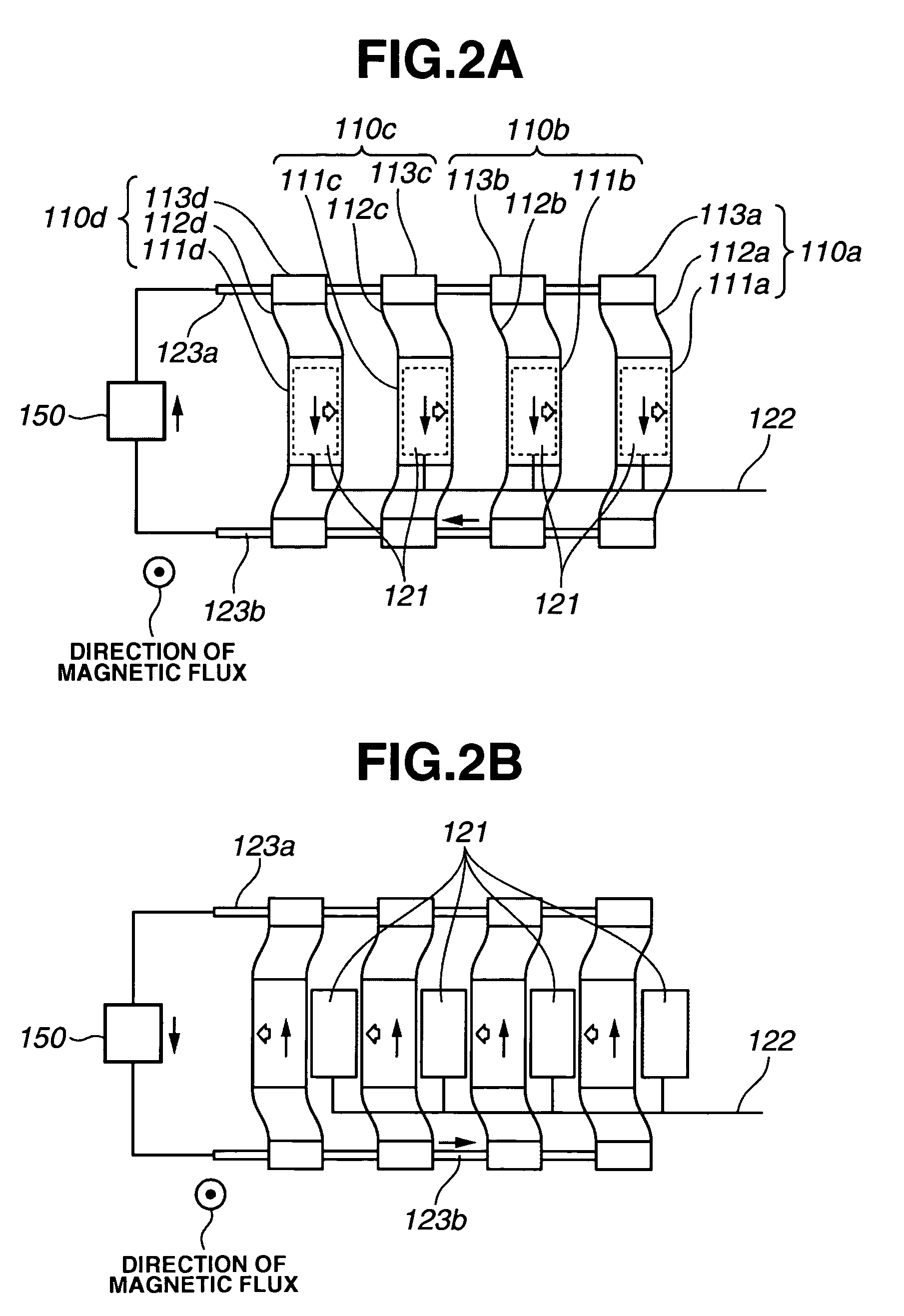Electric potential sensor, and image forming apparatus
a technology of electric potential and image forming apparatus, which is applied in the direction of resistance/reactance/impedence, optics, instruments, etc., can solve the problems of increasing the mass of a movable portion, the cost the limit to the reduction of the size of the conventional mems electrostatic sensor, etc., to achieve lightening of the mass of the movable portion, reducing the size of the conventional mems electrostati
- Summary
- Abstract
- Description
- Claims
- Application Information
AI Technical Summary
Benefits of technology
Problems solved by technology
Method used
Image
Examples
first embodiment
[0038]FIG. 1 illustrates a disassembled structure of a first embodiment directed to an electric potential sensor. As illustrated in FIG. 1, a detecting electrode assembly 121, a takeout electrode 122 for the detecting electrode assembly 121, and takeout electrodes 123a and 123b for driving are patterned on a substrate 104. The detecting electrode assembly 121 consists of a set of detecting electrodes which are spaced from each other and electrically connected to each other.
[0039]Movable shutter units 110a to 110d are comprised of shielding members 110a to 110d, parallel hinge suspensions 112a to 112d, and fixing members 113a to 113d, respectively. Those portions 111a to 111d, 112a to 112d, and 113a to 113d are formed in a united form with electrically-conductive material, respectively. Each of the fixing members 113a to 113d is fixedly bonded to the driving takeout electrodes 123a and 123b. The shielding members 111a to 111d are supported by the parallel hinge suspensions 112a to 11...
second embodiment
[0046]FIG. 3 illustrates a disassembled structure of a second embodiment directed to an electric potential sensor. As illustrated in FIG. 3, two detecting electrode assemblies 221a and 221b, takeout electrodes 222a and 222b for the detecting electrode assemblies 221a and 221b, and takeout electrodes 223a and 223b for driving are patterned on a substrate 204. Each of the detecting electrode assemblies 221a and 221b consists of a set of detecting electrodes which are spaced from each other and electrically connected to each other by each of the takeout electrodes 222a and 222b for the detecting electrode assemblies 221a and 221b. Detecting electrodes of the detecting electrode assemblies 221a and 221b are spaced from each other such that they cannot be electrically shorted therebetween.
[0047]Movable shutter units 210a to 210d are comprised of shielding members 211a to 211d, parallel hinge suspensions 212a to 212d, and fixing members 213a to 213d, respectively. Those portions 211a to 2...
third embodiment
[0054]FIG. 5 illustrates a disassembled structure of a third embodiment directed to an electric potential sensor. As illustrated in FIG. 5, two detecting electrode assemblies 321a and 321b, takeout electrodes 322a and 322b for the detecting electrode assemblies 321a and 321b, coupling electrodes 323a to 323c, and takeout electrodes 324a and 324b for driving are patterned on a substrate 304. Each of the detecting electrode assemblies 321a and 321b consists of a set of detecting electrodes (only one detecting electrode of the detecting electrode assembly 321b is shown in FIG. 5) which are spaced from each other and electrically connected to each other by each of the takeout electrodes 322a and 322b for the detecting electrode assemblies 321a and 321b. Detecting electrodes of the detecting electrode assemblies 321a and 321b are spaced from each other such that they cannot be electrically shorted therebetween.
[0055]Movable shutter units 310a to 310d are comprised of shielding members 31...
PUM
 Login to View More
Login to View More Abstract
Description
Claims
Application Information
 Login to View More
Login to View More - R&D
- Intellectual Property
- Life Sciences
- Materials
- Tech Scout
- Unparalleled Data Quality
- Higher Quality Content
- 60% Fewer Hallucinations
Browse by: Latest US Patents, China's latest patents, Technical Efficacy Thesaurus, Application Domain, Technology Topic, Popular Technical Reports.
© 2025 PatSnap. All rights reserved.Legal|Privacy policy|Modern Slavery Act Transparency Statement|Sitemap|About US| Contact US: help@patsnap.com



